iPhone Sun, Moon, Satellites,
Globular Clusters, Aurora
Posted: 12 May 2024
|
Open: Saturday, 11 May 2024, 1742 MST Temperature: 94°F |
Session: 1966 Conditions: Mostly clear, breezy |
Equipment:
12" f/8 LX600 w/StarLock
2" 24mm UWA eyepiece
2" 30mm eyepiece
Camera:
iPhone 15 Pro Max
1746 MST: LX600 ON, StarLock OFF, High Precision OFF.
Attached the full aperture solar filter on the 12" telescope.
Viewed the Sun, 102X and 81X. Sunspot AR3664 was still large approaching the limb of the Sun. This is the very active region that has produced many strong solar flares, resulting in the Aurora Borealis (Northern Lights) that I saw on the previous night.
I mounted the iPhone 15 Pro Max on the 30mm eyepiece using the 3-axis adapter. Took this afocal 81X image of the Sun using the Camera app (1X lens).
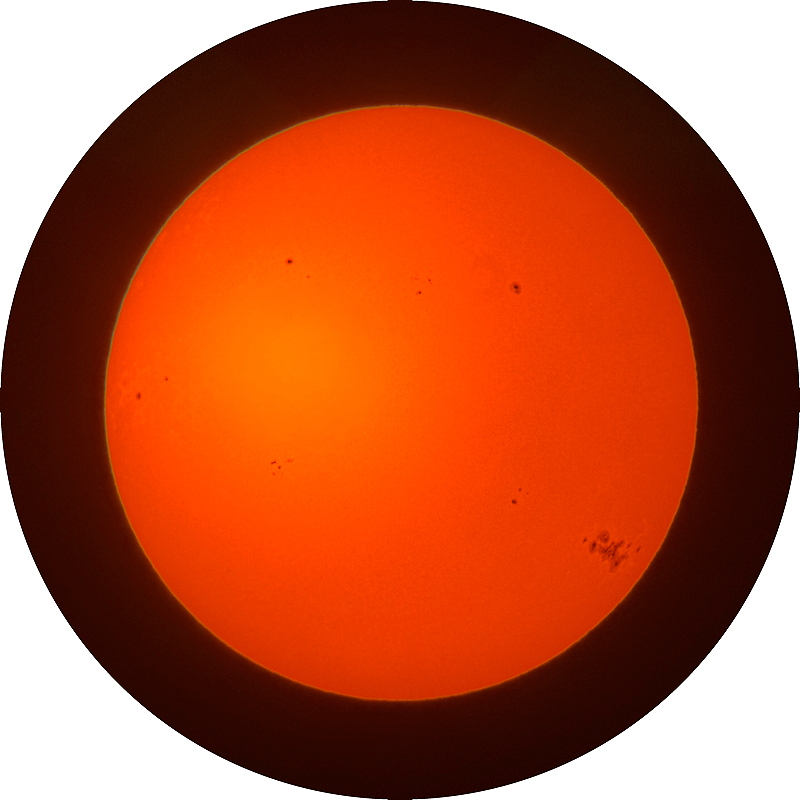
1805 MST: Slewed to the star Sirius. It was visible in the bright blue sky, 81X.
I updated the TLE in the AutoStar for this night's excellent pass of the International Space Station (ISS).
1812 MST: I began relaxing on the observatory patio bench. This photo shows the D850 DSLR that I hoped to use if the Aurora became active this night.
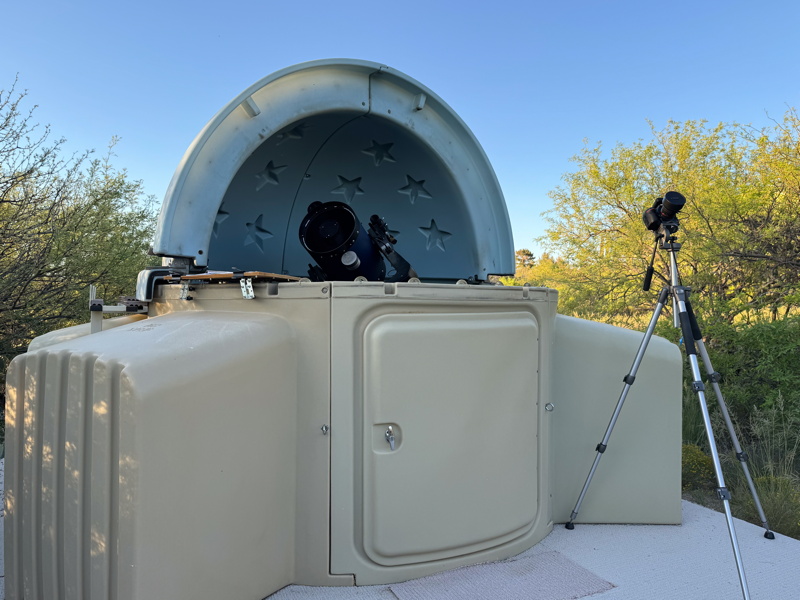
1900 MST: Dome OFF.
1917 MST: Sunset. Calm now. Checked the alignment of both finderscopes.
I then viewed the Moon, 81X. Mounted the iPhone on the 30mm eyepiece and took this afocal image using the NightCap Camera app (ISO 55, 1/1000sec, 1X lens).
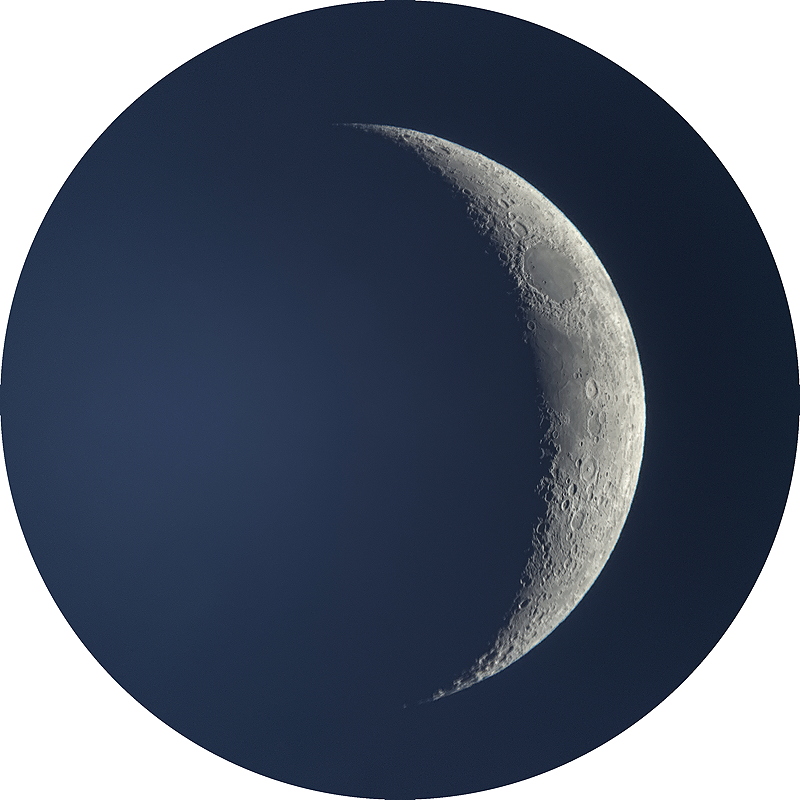
I attached the LiDAR Cover on the iPhone in preparation for imaging the ISS and mounted the iPhone on the 30mm eyepiece. I focused on the Moon, locked the 12" primary mirror, and locked the iPhone Camera app exposure and focus. I was now ready for the ISS pass. I would do an afocal 81X, slo-mo, 240fps video. With the exposure and focus set and locked for the Moon, I expected that the exposure and focus would be good for the bright ISS. Unfortunately, a few seconds before the start of the pass and the start of the video recording the iPhone went to sleep. When I woke it up the AE/AF lock had been turned off and there was not sufficient time before the pass start to slew back to the Moon. So I was stuck with whatever exposure (with all the black area in the field-of-view) and focus the Camera app decided to use. I have asked Apple to provide an infinity focus lock in the Camera, but they have not done that. This image shows the ISS as it appeared in two frames from the video. The ISS is overexposed and slightly out-of-focus. The full-frame shows the scale of the ISS to the FOV with the inset showing larger versions.
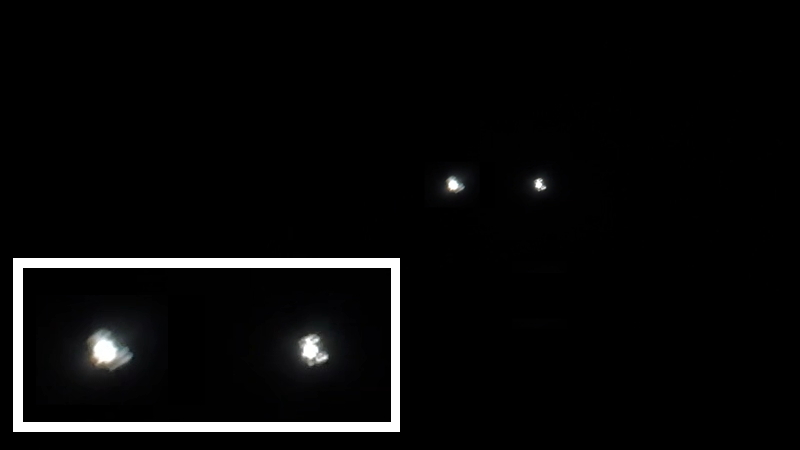
I will use a different video app on the next iPhone ISS afocal imaging test.
2006 MST: Dome ON.
2007 MST: Relaxed on the bench to watch the stars come out and wait for the Aurora Borealis to (hopefully) begin. From online reports I was seeing, the geomagnetic storm was not as active this night as on the previous night.
2010 MST: I saw one SpaceX Starlink satellites train, followed closely behind by another SpaceX Starlink satellites train. This handheld iPhone photo taken with the Camera app (Night Mode, 3 seconds, 1X lens) shows both trains just before they faded out.
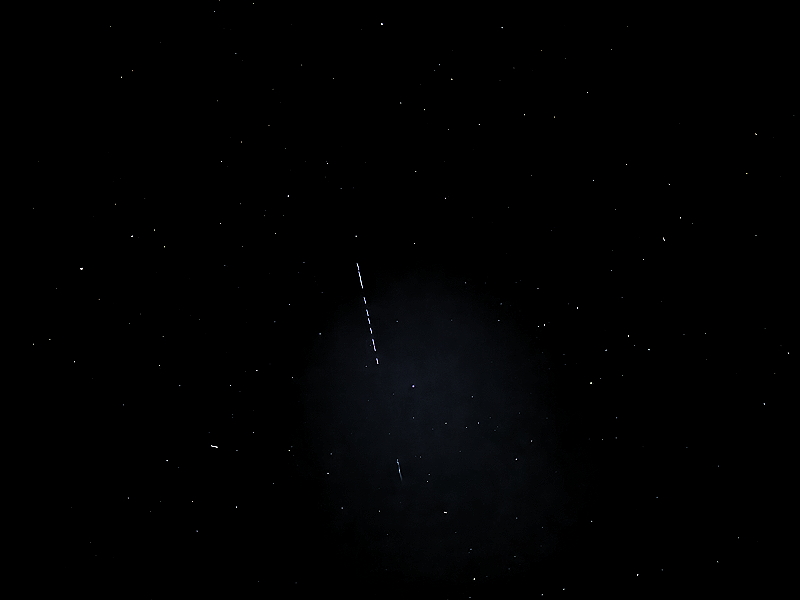
2055 MST: I saw a bright meteor in the western sky near Gemini and the Moon moving west.
2100-2110 MST: Took a short break.
Viewed Omega Centauri (globular cluster), 81X. Attached the LiDAR cover on the iPhone and mounted the iPhone on the 30mm eyepiece. Took these StarLock autoguided iPhone afocal 81X images using the Camera app (Night Mode, 5 seconds, 1X lens).
Omega Centauri (globular cluster)
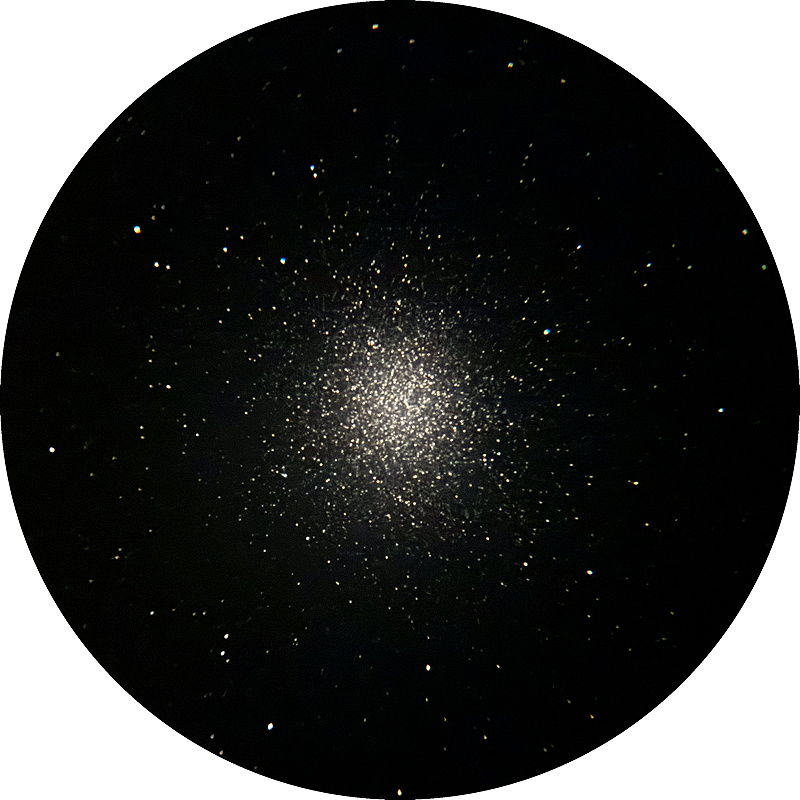
Great Globular Cluster in Hercules (M13)
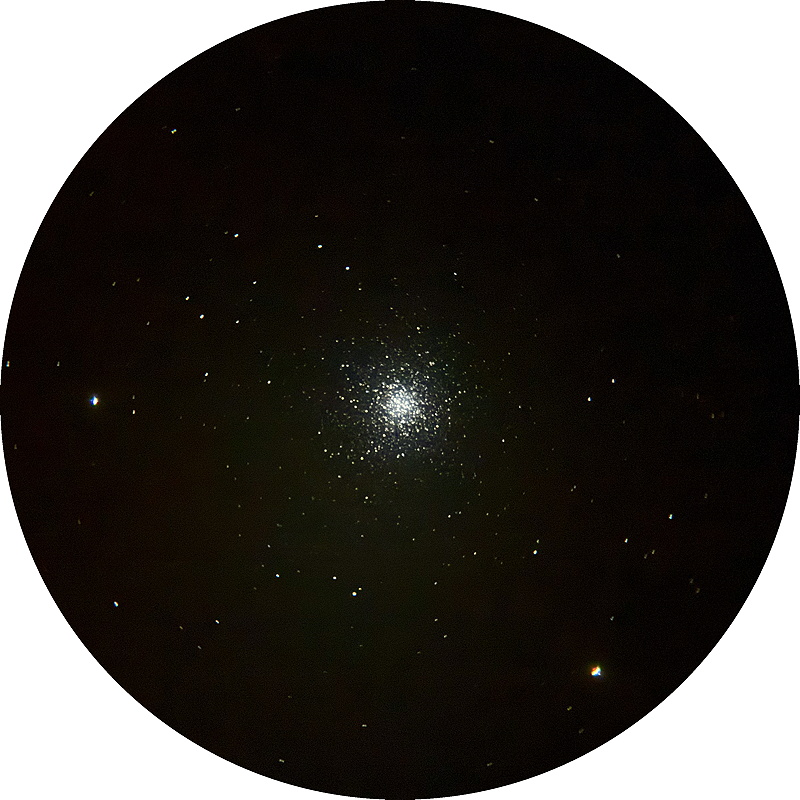
2139 MST: StarLock OFF.
I took a look at the Kitt Peak skycam and saw that it showed some faint Aurora low on the northern horizon. Although I could not see any Aurora I took a handheld iPhone 15 Pro Max photo of the northern sky using the Camera app (Night Mode, 3 seconds, 1X lens). The red glow of the Aurora was captured.
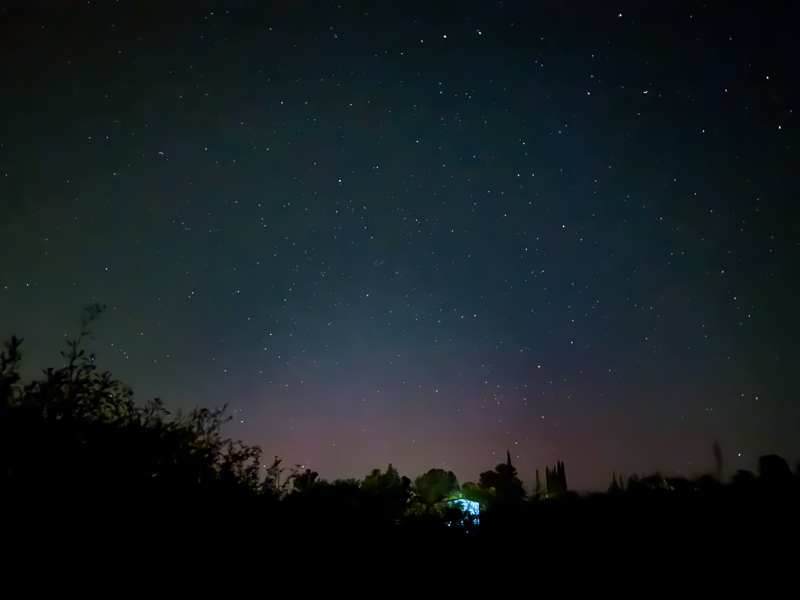
However, the Aurora quickly faded and never reappeared.
Viewed the Great Globular Cluster in Hercules (M13), 102X.
2209 MST: LX600 OFF.
|
Close: Saturday, 11 May 2024, 2221 MST Temperature: 60°F |
Session Length: 4h 39m Conditions: Clear |
After leaving the observatory, I continued to monitor the Kitt Peak skycam for a reappearance of the Aurora. Nothing appeared whenever I checked. I finally gave up at 0130 MST, Sunday morning, 12 May.
Comments are welcome using Email. Please read the Email Etiquette guidance.
Cassiopeia Observatory Home Page
Copyright ©2024 Michael L. Weasner / mweasner@mac.com.
URL = http://www.weasner.com/co/Reports/2024/05/12/index.html
